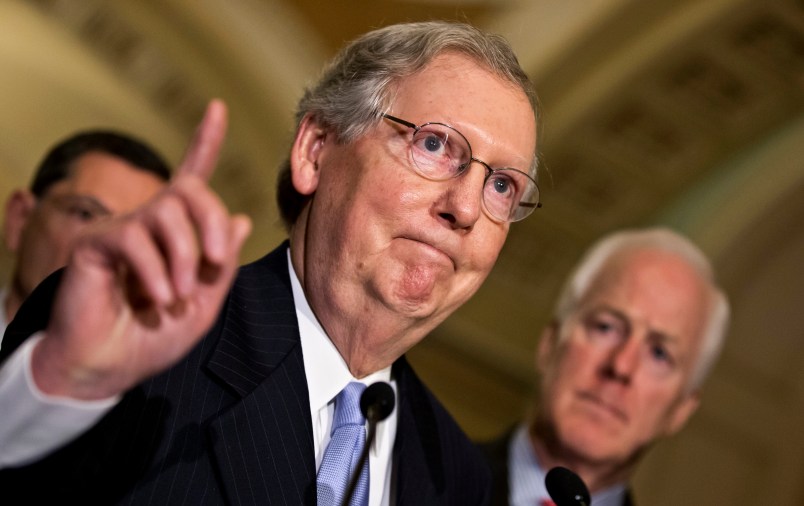A few days ago I was talking to one of our DC reporters about how to find the narrative thread in the politics of this moment. We basically knew there would be no legislation in 2013, though there was enough possibility to pretend. But this year we don’t have to pretend. Nothing is happening on Capitol Hill besides possible investigations. But that’s not the main thing that makes it hard to grasp the thread of the political moment.
The real rub is that it’s pretty clear the GOP faces serious longterm challenges, largely tied to demography and the increasingly liberal and de-racialized political outlook of younger Americans. And yet, right now, things seem pretty good for Republicans. They will at the worst hold their own in 2014 and they could certainly win control of the Senate and expand their House majority. These two realities, which not many people fundamentally question, create a topturvy, hard to make sense of political reality.
Yet many Democrats fondly look forward to 2016 as the year when the future finally arrives and the GOP’s fate as an increasingly demographically narrow, white-identified party finally comes home to roost. But what if it’s not quite like that?
It is important to recognize that the GOP’s strong 2014 position is largely based on a fortuitous alignment of events: the standard 6th year mid-term curse for a two term president, the fact that the Democrats have many more Senate seats up for reelection and those Senate seats tend to be in the reddest states. Those two factors together are daunting. And when you figure in President Obama’s tepid approval numbers, it starts to get ugly.
For an inverse set of reasons, Democrats are back with the strong hand in 2016. But what if the future – and let’s define the future as the next 10 to 15 or even 20 years – is not the 2016 electorate but the emergence of two separate electorates (a midterm electorate and a presidential year electorate) for years to come?
There are decent arguments for believing this. Let’s posit for the sake of conversation that the “new” electorate, showing itself strongly in presidential years, gives the Democratic party a dominant, though of course not total, hold on White House for the next generation.
But why will 2018 or 2022 or the successive off years necessarily be different than 2014?
I spoke to a political columnist who I greatly respect this weekend who sees just something like that happening. First you have the 2010 gerrymander which gives Republicans huge advantages in the House. But even after that you have the much more significant concentration of Democratic voters in cities. That means Republican voters are much more efficiently distributed, giving the GOP a strong advantage in the House. Meanwhile the GOP is generally stronger in small (population) rural states, which gives it a built in advantage in the Senate. Add on the increasing organization of politics around age and racial lines and you see a strong built in turnout advantage for Republicans backing up those structural advantages in both Houses of Congress.
So yes, we’re moving toward the new 21st century electorate in this view of things. But we could also have in store 10 or 20 years with the Democrats holding a strong hold on the presidency and the Republicans holding an equally tight hold on the Congress. In other words, more or less a generation long replay of the tense impasse of the last half dozen years.
While I think there’s a decent argument for all this on the merits, I fall back to a more general belief, which is that we’re seldom able to see much beyond a couple election cycles into the future and sometimes less than that.
I remember the permanent, locked in, Republican majority after the 2004 election, the Obama realignment of 2008 and now this. It’s very, very hard for us not to see what we see in front of us and project it out, sometimes indefinitely, into the future.
Still, maybe we’re in for a longer period of impasse than a lot of us imagine.






